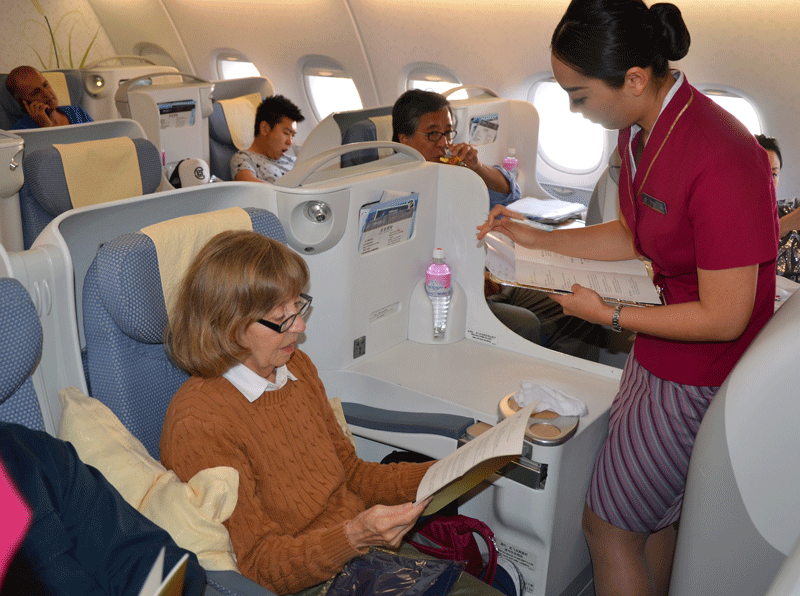
Those were the days, my friend. I thought they’d never end. China Southern Airlines, Business Class, 2015
By David DeVoss
When travel began to plummet in mid February airlines responded in the usual way: they dropped prices. By the last week in February it was possible to fly round-trip from LA to Montreal for $196 on American. Round trips between United hub cities also fell below $200.
But then something unusual happened. Nobody snapped up the great deals.
So, in early March, domestic prices were reduced an additional 15%. Travelocity even offered an extra 17% off if travelers would buy the already reduced fares through its Internet app. Spring Break arrived and with it another round of low cost flights like the $125 round-trip from Dallas to San Juan. And still very few travelers of any age bought tickets.
Today, despite nearly every American legacy carrier mothballing part of their fleet, “ghost” flights cross the country carrying less than a dozen passengers. Desperate to fill empty seats, airlines last week began cutting routes. American stopped nearly all of its international flights. Delta grounded 300 airplanes and slashed capacity 40%. Some carriers like Air Vietnam and Austrian Airlines simply stropped flying.
For young millineals, Covid-19 is especially burdensome. Many feel their unmarried or newly married years should be spent having fun, not hidden away in self-quarantine. Many believe the forced isolation is designed only to prevent them from becoming unsuspecting vectors that kill off geezers.
Millennial Lindsay Myers satisfied her passion for travel by becoming an Instagram influencer and starting a blog called Get Lost With Lindsay. Lindsay focuses on budget travel and minimizes her expenses by recommending products and destinations that host her. Alas, those destinations are getting harder to find in a period of reduced flights, so today she’s adjusting the idea of what an escape is.
“Escape can be from our own homes. There are so many online sources that are offering virtual tours around the world. You can walk the halls of the Louvre Museum, venture through Yosemite National Park, or look through the eyes of the apes at the San Diego Zoo. All from the comfort and safety of your own home. We’ll all be traveling again soon. For now stay inside, wash your hands, and be healthy.”
Even in states with Stay at Home directives, outdoor recreation still is permitted. It’s possible to walk along a beach, hike a mountain trail or take a drive through the countryside. Just be mindful of social distancing and don’t stop for anything except gasoline. “Flattening the curve” is a priority for us all.
So is the wise use of U.S. government money to shore up a devastated economy. Not surprisingly U.S. airlines were first in line to request government support. They want $80 billion and Washington is poised to give it to them
Yet these are companies that until two months ago were enjoying record profits thanks to a $40 checked baggage fee, insisting passengers pay between $100 to $200 switch the date of a return ticket and packing extra rows in coach after reducing the pitch and size of seats made even narrower by the removal of padding. Was it only two months ago that a video went viral showing an angry passenger pounding the seat of a passenger in front of him who had the temerity to recline.
OK, I understand a functioning economy depends on efficient airlines. But do taxpayers really need to bail out airline executives who have ruined the travel experience to boost the value of their bonuses and stock options?
Of course the government should help furloughed airlines employees recover most, if not all, of their lost salary. Other costs associated with mothballing aircraft are worthy of subsidy. But neither airline nor cruise should be allowed to profit from the coronavirus crisis. They made money in the good times. Now they should experience the worry all Americans are starting to feel.![]()


